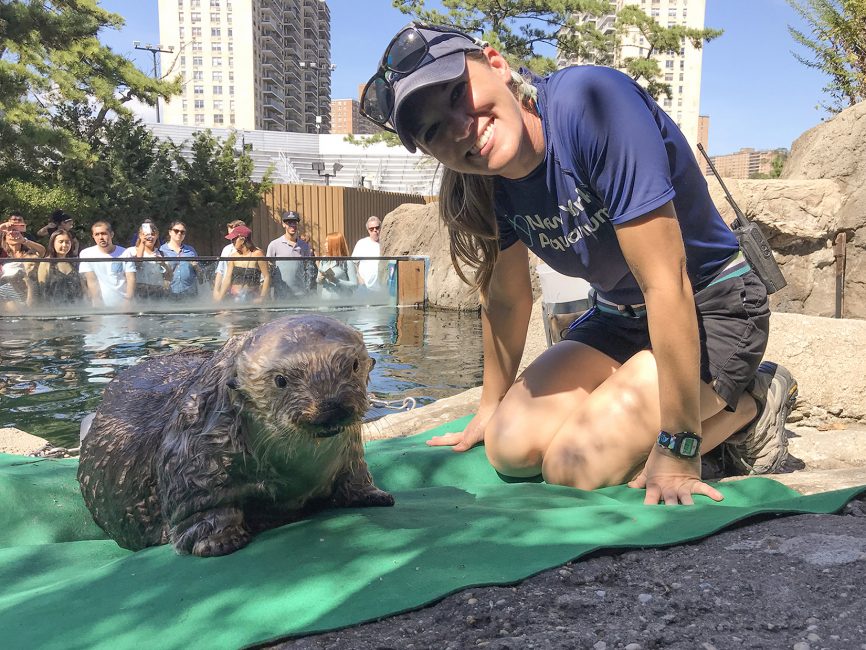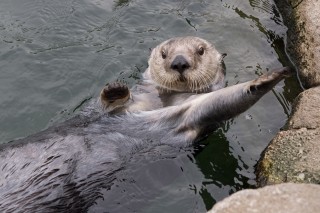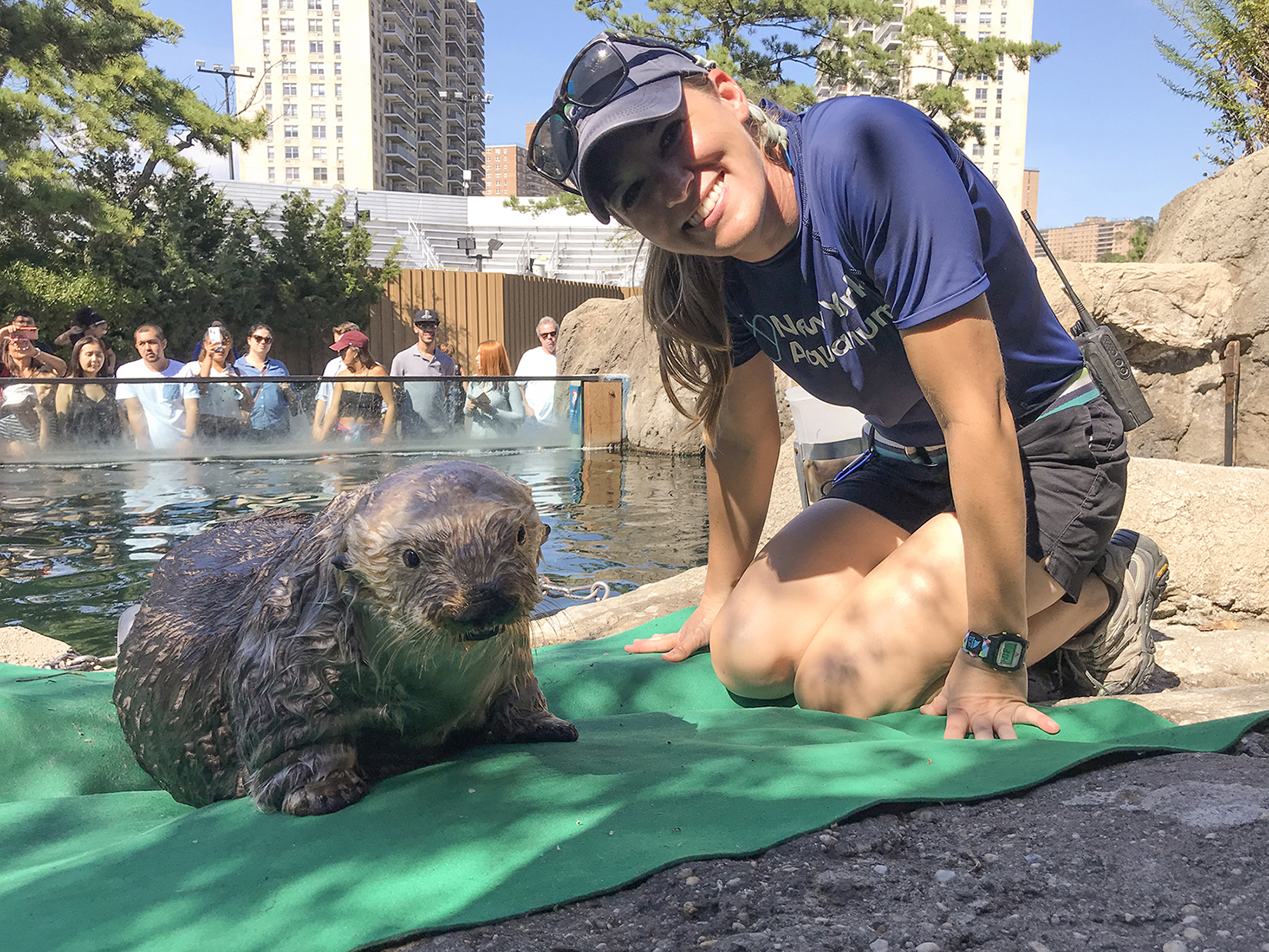
July 19, 2021
Jacob C. Otter
- as seen by -
 Caitlin Bartlett
Caitlin Bartlett
California sea otters (Enhydra lutris) in the wild typically live to be in their early-to-mid teens, but in human care they can reach their early 20s. Jacob, the oldest sea otter at the Wildlife Conservation Society’s New York Aquarium, is estimated to be 18 years old. He was rescued by the Marine Wildlife Veterinary Care and Research Center in California, and came to the Aquarium in 2009. Jake is a geriatric animal, so he requires special care. Over the last few years, I have been lucky enough to work with Jake to learn skills so he can participate in his own health care and build his husbandry repertoire. Some of these behaviors are for eye health, mobility, and grooming.
Many veterinary exams require touching an animal with instruments. Through training, Jake learned to accept tactile behaviors and is tolerant of new objects that we use for training and health care. For example, he has learned a tonometer behavior, where he touches and holds still on a target while a veterinarian or technician applies the tonometer to his eye. This device measures the pressure of his eye and helps us better assess his eye health.
Jake is a key player in his own health care and his ability to move is a huge factor. Due to arthritis, Jake has a tendency to drag his rear flippers when on land. To help with his mobility, we have introduced several things to the exhibit. Our maintenance staff built a custom ladder that Jake uses when exiting the water. He also has a “Slip N Slide” mat (above) that lies across the deck. His “Slip N Slide” is very important as it allows him to efficiently move to other areas on land. Jake also has a floating dock as another option to exit the water and allows staff to get closer to him in the water.
Sea otters lack blubber and rely on their fur for warmth and insulation. They spend several hours a day grooming their fur which has more than one million hairs per square inch, the densest of any animal. Maneuvering to groom can become difficult with age. In order to prepare Jake should this occur, we trained a voluntary groom behavior in which he allows keepers to assist with the upkeep of his luxurious locks. For this behavior, Jake sits calmly on deck snacking on shrimp and clams while a keeper combs and blow dries his hair. Yes, blow dries. We use a cordless, cold air blow dryer and comb. By the end he looks like a new man.
EDITOR’S NOTE: This week is National Zookeeper Week, July 18-24, 2021, a time to recognize our keepers’ hard work, conservation efforts, and passion in caring for animals.




Leave a Comment